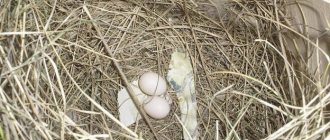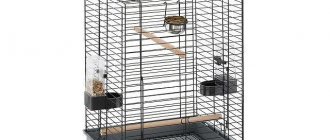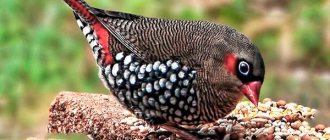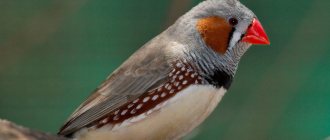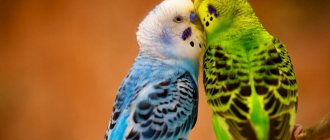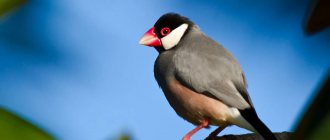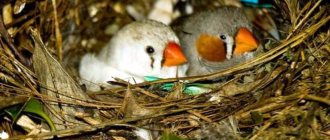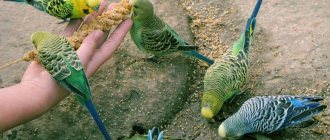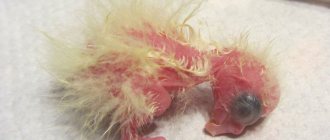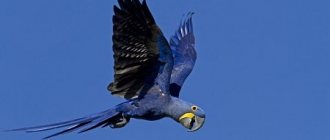There are many species of ornamental birds in the world. Along with parrots and canaries, there are finch birds, which are able to please the household only with their appearance. These pets are distinguished by their unpretentiousness in maintenance. In addition, these are cute and gentle creatures that immediately become home companions. At the same time, they communicate with each other using sounds that resemble duck quacks. The zebra finch is considered the most suitable option for having a bird friend at home. The bird represents one of the varieties of finches, belonging to the family of weaver finches.
These pets, which give the impression of affectionate and gentle birds, do not like to be in the hands of humans. They prefer to live next to their relatives, so they feel great in a pair. They behave well in any cage, but they do not like to be in the company of their owner or family members. Therefore, such birds are more suitable for busy people who prefer to watch their pets from afar.
Interesting to know! Finches, compared to other pets, are able to live in a cage without contact with their owner for as long as 5 days. The owner's main task is to ensure that the birds have enough food and drink.
Historical data
The homeland of zebra finches is Australia. In this country, finches prefer to live in arid regions, while they constantly migrate in search of food. These unique birds live almost throughout the entire Australian continent. The settlement of these birds was facilitated by the development of agriculture and the improvement of gardens, pastures and fields located in areas with complex terrain, where forests had previously grown. In places where there is not enough drinking water, birds settle next to human habitation. They are not afraid of noise and screams, so they place their nests directly on the streets or inside any outbuildings.
Important point! Wild relatives are able to live without water for a week, so one can only be surprised at their endurance.
Even being in a cage, where there is always enough clean water, they silently drink it in unlimited quantities. During prolonged droughts, weaver finches always survive, and they can drink highly salted water without harm to their health. Many species of birds simply die after drinking salt water to relieve thirst.
Description of zebra finches
Amadins are decorative birds with quite variegated plumage of various colors and shades. The length of adult individuals is slightly more than 10 centimeters. The area of the back, neck and head are painted in ashy gray shades, but the area of the cheeks and ears is decorated with bright orange spots. The abdomen and chest area are white, with a transition to barely noticeable yellow shades. The goiter has a gray tint, and on its sides there are thin black stripes. Males can be distinguished from females by the presence of a black spot on their chest. Females have black stripes running down the front of their heads. The color of the beak, regardless of gender, is bright red.
Interesting moment! Australian scientists managed to breed a breed of finches that are completely white, without any spots or other inclusions. This species is similar to the zebra finch, but the bird's eye color is dark, like its wild relatives.
Zebra finch - All about the bird species |Bird species - Zebra finch
Mash
As a nutritious and healthy addition to the main diet, birds are offered wet mash 1-2 times a week; During the molting and breeding period, this type of food is given daily. Mash is prepared from grated carrots or beets, rice, corn or buckwheat porridge, crushed boiled eggs, white bread crumbs, low-fat cottage cheese, grated apples, low-fat curdled milk, gammarus. Add a few drops of fish oil, honey and lemon juice to the mixture. The consistency of the mash should be crumbly.
Care and maintenance
These birds are distinguished by their active, restless behavior, so they will need a fairly spacious cage to keep them. The minimum dimensions of the cage are 50 cm in length and the same in width. In such a cage, a pair of finches with their chicks will feel very comfortable.
Particular attention should be paid to the shape of the cell. For finches, square-shaped cages are more suitable, but not round ones. The fact is that, being in a round cage, the birds experience discomfort and begin to rush around it in a state of stress. Even the upper part of the cage should be flat, and the cage should be longer than wide. It is desirable that the cage is also high, then comfortable conditions for these birds will be provided.
There should be several drinkers in the cage, but there can be only one feeder. Perches made of soft trees such as birch or linden should be attached to the sides of the cage, since, as mentioned earlier, the birds are very mobile and will happily jump on these additional elements. Finches simply love to take water treatments, so there should also be baths in the cage for bathing. They can be purchased at a pet store, but it is better to place them on the cage doors. Such baths do not allow water to splash throughout the cage, so the food does not get wet. It is very important to keep their home clean to avoid the occurrence of any illnesses.
Finches prefer to lead a gregarious lifestyle, so when left alone they get bored, which often leads to their death. Zebra finches can show their fighting nature if they don’t like something. Their discontent is accompanied by noisy behavior, with prolonged and loud quacking. There are quite jealous individuals who are unable to get along in the same cage. This is what concerns their relatives, and in relation to other species of birds they behave quite aggressively and can simply peck them. It is not recommended to keep finches and parrots in the same cage, as this will not end well. When finches begin to seriously pester parrots, they begin to bite their paws. In a fit of anger, parrots can simply bite them off.
Character
In captivity, their character manifests itself somewhat ambiguously. On the one hand, they are distinguished by trust in their owner. But on the other hand, finches of many species really don’t like it when the owner or another person picks them up.
Unlike most other pets, they can tolerate the absence of their owner for several days relatively calmly, provided they have enough food and drink. They can be kept as a pet by people who often go on long business trips, or simply by people who are very busy at work.
What do finches eat?
The basis of the finches' diet is 6-7 different grains, and it is not recommended to feed these birds with food intended for feeding canaries, parrots and other exotic birds. The basis of the nutritional mixture should be millet, as well as grains from plants such as rapeseed, mogar, oatmeal, hemp and chumiz, and in equal proportions. You should definitely include meadow grass, in the form of dandelion, wood lice, plantain or clover. One teaspoon per day of such grain is enough for these birds. If it is not possible to prepare a mixture from such seeds, any porridge will do. Berries, vegetables and fruits should be added to porridges, but in small quantities and with caution.
Boiled eggs also do not interfere with your diet, but before that you need to chop them. We should not forget about clean warm water, as well as mineral supplements in the form of crushed shells, chalk, river or sea sand.
Need to know! These birds are prohibited from giving fragrant herbs and spices, in the form of dill, basil, parsley, rosemary, etc., since the finches may die. For these birds, these are dangerous plants, like opium for humans. It is also not recommended to give them vitamins intended for parrots. On the one hand, it seems like birds need vitamins, but finches are unique birds and do not need vitamins.
FINCHES / CONTENT, CARE.
Fighting excess weight
A common problem with domestic finches is excess weight. Birds quickly gain it when they have poor diet or little activity. You can combat this problem with diet. Remove foods containing large amounts of protein and fat from your diet for a couple of weeks.
If possible, move the birds to a larger cage, but it will be better if they can fly around the room.
Reproduction of finches
As far as is known, living in the natural environment, females choose the best and strongest males for mating. As for finches, they are not attracted to such natural selection. Female finches choose interesting, loving partners who are interested in the world around them. As a result of the scientists' research, the forced mating of these birds, although it produces offspring, but after the chicks are born, their parents are not interested in them, which leads to the death of the offspring.
Upon reaching 6 months of life, finches can already mate if the female and male are interested in each other. Moreover, in 1 year the female is able to lay eggs 3 times. In fact, more than 3 times, but experts do not recommend doing this, since the female may not be able to stand it. It is necessary to ensure that the female has a six-month break.
Interesting to know! The difference between zebra finches and Japanese finches is that zebra finches are ready to breed after six months, while Japanese finches are ready to breed only at 9 months.
During the period when the female and male hatch eggs, they do not need a lot of food, and when the chicks begin to be born, the parents should receive adequate nutrition. During this period, parents will benefit from sprouted grain. In addition, after the birth of the offspring, the cage must be placed in a well-lit place, but the cage should not be exposed to direct sunlight. It is also desirable that the birds feel comfortable, without excessive noise.
Breeding at home
By analogy with budgies, finches easily reproduce in captivity. Their sexual instinct first appears at the age of 7–9 months. Breeders agree that early breeding should not be encouraged - let the female grow up to at least a year. If the owner is interested in obtaining offspring from his charges, he must place a couple of birds in a separate cage in time. In a new home, you should hang a nesting house and provide the pets with material for building a nest: twigs, hay, dust. In one year, finches have up to three broods, but if they nest so often, the female’s body may not be able to withstand it. Sometimes tired birds abandon their chicks or die from exhaustion.
Buy a bird
The birds communicate with each other quite interestingly, which deserves special attention. Therefore, you should only buy these birds in pairs, since one finch feels completely uncomfortable in the cage, sometimes making terrible sounds. Therefore, you should always remember this and should not mock these birds. If you keep finches at home, then only a couple, at least.
Each variety of these birds is considered rare, since there are not so many of them in natural conditions. Despite this, decorative finches are very popular because these birds are smart and give joy.
Birds cost depending on the species. In the markets, these birds cost at least 2 thousand rubles. Parrot finch and diamond finch will cost around 5 thousand rubles. If you buy them at a pet store, they will cost 3 thousand rubles. Japanese finches are much cheaper, so you can pay only 500 rubles for one bird. If you buy in pairs, then for Japanese or zebra finches you will have to pay 800 rubles each.
Varieties
Scientists count 38 species and more than 300 subspecies. Their number grows every year. This is explained by the activities of breeders who are constantly developing new varieties of these birds. We will look at some varieties popular among poultry farmers. In our article we will not touch upon such types as:
Amadina Gulda.
Zebra.
Rice.
Japanese
This variety was bred by breeders from the Land of the Rising Sun and from there came to Europe. Its representatives live mainly in conditions of captivity. In natural conditions, you can sometimes find feral individuals. Thanks to their calm nature and unpretentiousness, even inexperienced amateurs can successfully breed them. They tolerate being kept with other non-aggressive birds quite calmly.
Chinese sparrows
They live in China and some parts of India. They are distinguished by their loudness and ability to make many different sounds. At home they can be kept together with other birds. Despite this, they are rare in captivity.
Diamond
They live in the wild in Australia. In their natural environment, they prefer to settle in low eucalyptus groves and forests. They cannot tolerate dense forests. Life expectancy is up to 5-7 years. Quite often found among home hobbyists.
Sharp-tailed
Sharp-tailed finches live in northern Australia. This is the largest bird of the order - its length reaches 17 cm, and its weight is 17.6 g. Since the end of the 19th century, the keeping of this bird in home cages and aviaries has been recorded. They are one of the favorite bird species among amateur birders.
Parrot finches
Representatives of this genus live over a vast territory of Southeast Asia, the Pacific Islands and northern Australia. The color of most species is dominated by green shades interspersed with areas of blue and red. They prefer to settle in the jungle, bamboo groves, and meadow areas. Often found at home.
Red-throated
Habitat: southern and southwestern Africa. The species gets its name from the red plumage on its throat and head. The wings and body of the birds are brown. Belongs to the smallest representatives of the family. The maximum body length reaches 13 cm.
Chestnut-breasted
Lives in Guinea, northern and eastern Australia. It got its name due to the light brown color of the breast. Prefers to live in large flocks in the jungle near water sources. Quite often found at home.
Scaly-breasted
Under natural conditions, this bird can be found in China, India, Indonesia, and the Philippines. Prefers to live in large flocks in tropical forests. It got its name because of its gray-brown color with a characteristic scaly pattern.
